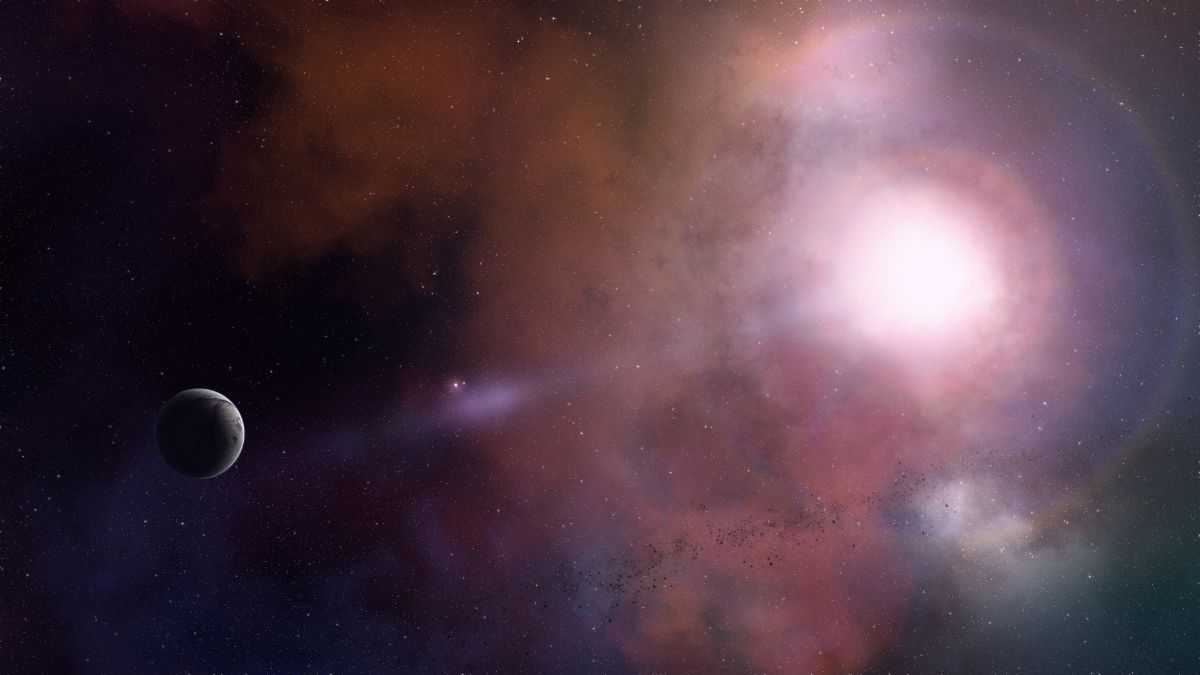The moon has captivated humanity since the beginning of time. Ancient cultures revered the moon as a deity, while farmers planted and harvested by its phases. In astrology, the moon represents our inner world of emotions, habits, and unconscious patterns.
As the moon orbits the Earth, it affects the tides of the ocean. Some believe that just as the moon’s gravity pulls on the tide, it may also “pull” on the water inside our bodies, triggering emotional and physiological changes. Skeptics argue this is pseudoscience, but many swear the moon impacts our mood and relationships.
The Lunar Cycle
The lunar cycle is approximately 29.5 days, marked by the waxing and waning visual phases of the moon:
- New Moon: When the moon is roughly aligned between the Earth and sun, its illuminated side faces away from us, leaving the lunar disk dark and invisible. This lunar phase represents new beginnings.
- Waxing Crescent: As the moon moves around the Earth, we seeincreasingly larger portions illuminated by the sun’s light. During this waxing crescent phase, many feel motivated to take action on goals and projects.
- First Quarter: At the first quarter moon, half the lunar disk appears illuminated. The moon rises at noon and sets around midnight, allowing us to see its half-lit orb high in the sky during evening hours. This phase is linked to improved concentration and focus.
- Waxing Gibbous: The moon continues waning gibbous, with more than half its surface illuminated. The moon now rises before noon and sets after midnight. Waxing gibbous moons purportedly boost creativity and playfulness.
- Full Moon: When the moon’s complete hemisphere faces the sun, we see a fully illuminated disk or “full moon.” Lunar gravity peaks during the approximately 3-day full moon phase, a time associated with heightened emotions, anxiety, and insomnia for some sensitive individuals.
- Waning Gibbous: Following the full moon, the illuminated portion slowly shrinks during the waning gibbous phase as the moon moves in orbit between the Earth and sun. Some report feeling run down and in need of rest during this time.
- Last Quarter: At last quarter, the moon once again shows us a half-illuminated surface. But now, the half-lit portion appears on the moon’s left side (as observed in the Northern Hemisphere). People often sense a push during this phase to finalize projects before another new cycle begins.
- Waning Crescent: During the waning crescent, the thin sliver of light continues shrinking each night as the moon circles back to the new moon alignment. We may feel introspective now, reflecting on the past cycle.
Moon Effects on Mood
Numerous studies attempt to correlate the lunar cycle with human behavior and mood. While results vary, evidence suggests full moons coincide with:
- Insomnia – Around the full moon, some complain of restless sleep and inability to fall or stay asleep. Studies confirm lunar activity can disturb sleep depth and duration.
- Stress and Anxiety – Stress hormones like cortisol and adrenalin tend to peak during the full moon for susceptible individuals. Some psychiatrists report increased anxiety attacks and hospital admissions at this time.
- Depression – Those prone to depression may experience worse symptoms before or during the full moon. However, others feel euphoric emotions during the full moon, so reactions vary.
- Mania – Manic episodes related to bipolar disorder seem to flare up more frequently during the full moon based on hospital admission rates and studies. The causes of this correlation remain speculative for now.
- Agitation – Agitated behavior reportedly increases by 12 percent in emergency rooms during full moons. However, scientists dispute this claim and attribute it to selective perception.
So while the moon may not drive people “mad,” its phases may correlate with mood symptoms, especially among those with existing mental health conditions. But skeptics claim some studies suffer from bias, limited data samples, and questionable methodologies.
Interpersonal Connections
Can the moon really influence our intimate bonds and social ties? Some theorists say yes, as evidenced by:
- Fertility – The waxing moon allegedly corresponds with increased fertility, while the waning moon coincides with lower fertility. Historical and agricultural patterns connect sowing and reaping crops with lunar phases for optimal yields.
- Menstruation – Some menstruation studies indicate that periods synchronize with the lunar cycle, especially among women living together. Yet reviews remain inconclusive overall.
- Relationships – Breakups and proposals may cluster around the full moon, presumably due to magnified emotions. One study even showed a 1 percent increase in births following some full moons.
- Communication – Misunderstandings easily sprout up during the full moon according to astrologers, so beware of miscommunications with partners.
- Cheating – Infidelity and romantic jealousy issues seemingly spike during certain moons. However, more research is needed to substantiate effects on romantic bonds.
Despite enduring beliefs about the “lunar lovelorn,” solid science proving the moon sways our connections remains sparse. Modern life may dilute any minor impact lunar cycles have on fertility, menstruation, or relationships.
Harnessing the Moon
You need not let the moon rule your emotions and social life. But paying attention to its rhythms by:
- Maintaining a moon phase calendar
- Tracking your moods and cycles
- Planning activities accordingly
Can help leverage the moon’s ups and downs and avoid its stressors. Use the moon’s stable cycle to find your own rhythm aligned with nature.
So monitor the moon’s phases, but take heed of confirmation bias. While evidence for moon mood effects is inconclusive, keeping an open yet skeptical mind may prove illuminating.








